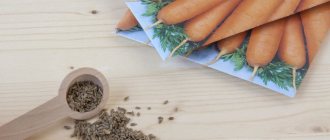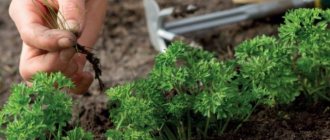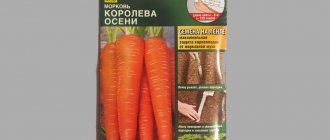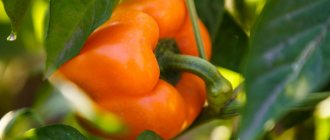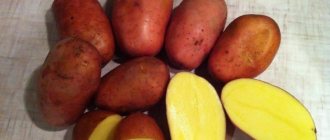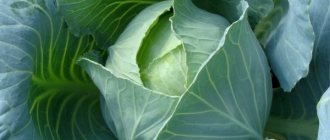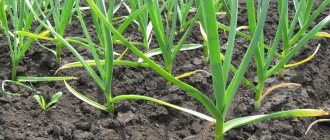What you need to consider when choosing carrot seeds for Siberia
When selecting seeds, you should take into account the germination percentage and planting time. Zoned varieties come in three types:
- early;
- mid-season;
- late ripening.
Depending on the ripening period, planting time may vary. You can plant as soon as the weather finally gets warm. You can start growing under the film, and then open it.
Zoned varieties are selected for planting
Principles for selecting varieties for winter storage
It is important to choose the right carrot varieties for storage. The duration of storage depends on the timing of planting and ripening.
- For winter storage, choose long-term varieties that can retain their appearance, weight, taste and beneficial properties for a long time. Mid-ripening and late-ripening carrots have these characteristics.
- Do not use seeds collected from the garden for several years in a row. Carrots grown from these seeds deteriorate in varietal qualities and resistance to disease deteriorates during storage.
- In climate zones with short summers, choose mid-season varieties. Late-ripening root vegetables do not have time to accumulate the required amount of fiber and sugar. Therefore, their shelf life is significantly reduced.
- Short, blunt-pointed varieties are suitable for clayey, heavy soils. On sandy loams and peat bogs with a neutral pH, it is possible to grow any carrots of medium and late ripening.
Early varieties of carrots for Siberia
The following can be considered the most cold-resistant:
- Dragon;
- Alenka;
- Carotel Parisian;
- Amsterdam.
They are not afraid of cold weather and are resistant to sudden temperature changes, which is important for the climate of Siberia.
Alenka
Alenka has good productivity, but requires active feeding. The seeds have good germination. The fruits are stored for a long time, up to 6 months.
Alenka has good taste
Amsterdam
A distinctive feature is its large size and dense structure. The plant responds well to feeding. Excessive watering is not recommended to prevent fungus from developing.
Belgien White
Resistant to pests and parasites. Root crops do not rot even with high soil moisture. However, the shelf life is short, only 3.5 months.
Bangor F1
Features: oblong shape and rich orange color. The plant loves soil rich in nitrogen. Responds well to fertilizing with complex fertilizers.
Dragon
It is resistant to cold and has high taste. Root crops ripen together and have an oval or conical shape.
Recommend a variety of dill.
Nina Ablalimova
NIIOKH-336: this variety is mid-season. Intense orange color. Blunt cylindrical root shape. Completely immersed in the soil. Has priority in size ratios in favor of thickness. With a length of 18 centimeters, a diameter of approximately 5 centimeters. Excellent taste, high carotene content. It is poorly stored and is used mainly for canning and fresh. NANDRIN F1: a wonderful early-ripening hybrid. It is better to use in central and more northern regions. The root crop is bright orange, cylindrical, has a length of 22 - 25 centimeters and weighs 200 - 300 grams. This variety has excellent taste. Keeps well. Kibray and Borey. And water more often
Invisible
The main thing is that the soil is non-acidic (you can tell from the beets). depending on what you are growing carrots for, the queen of autumn is good for long winter storage, a real queen grows up, for baby food and juices - for children, , , floco, just for summer-autumn consumption - orange honey, it's up to you to decide, And for me now there is no better variety than Emperor. Firstly, the seeds are so large that they make it possible to sow carrots immediately at the required distance (I gave up granular ones a long time ago due to poor germination on our land). Secondly, the carrots themselves correspond to the seeds - very large, smooth, sweet and juicy. I really like Losinoostrovskaya! It's growing huge!
Galina
Golden Autumn is a high-yielding, universal, late-ripening variety; large, smooth root crops grow up to 27 cm in length and weigh up to 220 g.
ღ•M@rin@•ღ
Yellow Stone variety - yellow carrots;
Maxim Sviridov
Designed for quick harvesting (May-July), which is not stored, but immediately consumed. The best varieties: Amsterdamska, Lenochka, Lyubimaya, Nantes, Orange Muscat, Parisian Carotel, Chantenay 2461, Fairy; hybrids: Bangor, Yaya, News, Napoli.
SlavuskaYa
selection - foreign and domestic;
zucchini {D.Z}
MOSCOW WINTER pretty
Irina Murzinova
CANADA F1: late-ripening variety. This is perhaps the highest-yielding hybrid. The root crop is in the shape of a semi-cone, has a bright color and a smooth surface. Tastes great. Very good for storage.
Tatyana Savchenko SIBERIA
Try Sosnovy Bor.
Carrot varieties for Siberia with medium ripening periods
The list of the most popular includes:
- Nantes;
- Vitamin 6;
- Viking;
- Altai shortened.
Features: good taste and smooth ripening.
Altai shortened
Grows well in slightly acidic soils. The fruits are large in size and rich orange in color. Shelf life 3 - 4 months.
Altair F1
It is resistant to diseases and pests. Reacts well to feeding. Pros: excellent yield and high taste.
Viking
Viking is not picky about soil fertility. Grows well on loamy soils. The fruits have an oblong shape and a rich taste.
Losinoostrovskaya 13
The plant requires watering and loosening the soil. The seeds have good germination.
Attention! The downside of this carrot variety is that it often suffers from fungus when overwatered.
Vitamin 6
Loves acidic and podzolic soils. Vegetables have the shape of an elongated cone. The shelf life is short, only 3 months.
Callisto F1
Grows well in slightly acidic soils. Is immune to pests. The fruits ripen together and have a bright orange color.
Nantes
A distinctive feature is large, dense fruits. The downside is that the seeds do not always germinate well. The variety is resistant to temperature changes.
Canada F1
One of the most cold-resistant species. The fruits are small, oblong, conical in shape. Shelf life 3 - 4 months.
Leander
Loves slightly acidic soils. Reacts well to feeding. The downside is that it does not tolerate sudden temperature changes.
Growing in Siberia and Altai Territory
Difficult weather conditions create certain difficulties in the process of growing carrots. The Siberian climate and weather of the Altai region cannot be called extreme for this culture. Seeds germinate even at low temperatures, and young shoots easily tolerate light frosts. At an average daily temperature of +20˚C...+25˚C during the period of active fruit growth, you can get a high yield with a high-quality presentation.
Low temperatures increase the time it takes for seeds to hatch. Therefore, in Siberia there is definitely no need to rush into sowing. If, however, cold weather sets in after sowing, it is recommended to cover the bed with sawdust and hay. In open ground, carrots can easily withstand short-term frosts down to -5 ˚C...-7 ˚C, but this will affect the taste of the fruit. Prolonged cooling in the spring and summer also reduces the marketability of carrots. The fruits grow in an ugly shape, and the pigment does not appear bright enough.
The peculiarity of carrots is that until the root forms, it takes all its nutrients from the seed. Therefore, it is very important to select high-quality carrot varieties for Siberia. The period of seed germination is often delayed, and the nascent fruit must have enough nutrition until the root system and sprout appear.
It is recommended to plant the seeds to a depth of about 2 cm, then the germination period will be slightly reduced.
Both autumn and spring methods are suitable for planting carrots in Siberia. Autumn sowing allows you to get a super early harvest. However, it is important to know that such root vegetables are only suitable for fresh consumption; they are not intended for long-term storage.
On a note. Autumn carrots ripen quickly, are not afraid of pests and diseases, grow to the maximum possible size and do not require preliminary pre-sowing seed treatments.
If you plan to harvest carrots for the winter, then planting will be organized in the first ten days of April. In order to guarantee high germination of seeds, they must be processed:
- Initial selection. The seeds are poured into a container with clean water; after a few minutes, the seeds unsuitable for sowing will float to the surface. You can discard them and leave the rest to soak for 1 day;
- To get rid of possible infections and diseases, the seeds must be treated with a 1% manganese solution for 5 minutes;
- To speed up seed germination, growth stimulants can be used. The concentration must strictly correspond to the recommendations on the packaging.
Advice. These measures can be carried out both comprehensively and separately.
Soil preparation is of great importance, since imperfect climatic conditions can be compensated by high soil quality. First of all, you should choose a well-lit area for planting, because carrots really love sunlight. Growing in the shade leads to a manifold reduction in yield. The selected area must be thoroughly cleaned of roots, weeds, pest larvae and other debris. All large lumps need to be broken up and the soil further loosened. The bed should be as soft and loose as possible. On very heavy soils, the addition of peat, sand and sawdust is allowed. It is better to apply fertilizer in the fall. The introduction of manure is prohibited, as it will be difficult for the root crop to grow deeper.
In terms of care, you should adhere to standard procedures. Watering should be moderate, but the soil should not be allowed to dry out. Thinning is very important for carrots. Thickening of crops will inevitably lead to smaller crops. The optimal gap between seedlings is 3-5 cm. Loosening also has a beneficial effect on the development of fruits. You only need to loosen the soil between the rows, otherwise there is a high risk of damage to the carrots. Some varieties of carrots have a peculiarity - part of the fruit peeks out 1-2 cm above the surface of the ground. When exposed to sunlight, this area begins to turn green. This means that solanine accumulates in the fruit. This substance gives root vegetables a bitter taste. To avoid this problem, carrots can be periodically hilled, but the tops cannot be covered with soil.
Late carrot varieties for Siberia
The best carrot varieties for Siberia from this category are:
- Flakkke;
- Vita Longa:
- Scarla.
The characteristic features of these carrot varieties for Siberia are beautiful large fruits and resistance to cold weather.
Incomparable
Vegetables are distinguished by their high density, pleasant delicate taste, and light orange color. However, the plant is often affected by fungus and carrot fly at high air humidity.
Flakke
The description says that Flakke carrots like plenty of watering and regular feeding. In the absence of sufficient moisture, it dries out and becomes deformed. Shelf life 4 months.
Nevis F1
One of the most unpretentious varieties of carrots for the Siberian region, it has a conical shape and a rich dark orange color. Shelf life 4.5 months.
Vita Longa
The shelf life is quite long, about 6 months. Carrots are not afraid of sudden cold snaps. Loves abundant watering.
Yellowstone
Grows well in slightly acidic soils. Sensitive to phosphorus and nitrogen deficiency. The seeds have good germination.
Scarla
The rich orange fruits are large in size. Well suited for making soups and salads.
For reference! The tops of this variety are often affected by the carrot fly.
Chantenay 2461
It is very popular among Siberians. It is unpretentious to growing conditions. The shape of a carrot resembles an elongated cone.
Late varieties have good yields
Ways to store carrots in winter
Having grown a good crop of carrots, you need to know how to correctly determine the time for harvesting and storing in storage - this period should be minimal.
Carrots store well, but some subtleties should be taken into account:
- The condition of the tops will help determine the timing of harvesting - they should turn yellow and darken;
- Carrots accumulate the most sugars in the last days of technical maturity (the last quarter of the growing season), so it is better to harvest even after the first frost:
- Late and mid-ripening varieties with elongated fruits are characterized by better keeping quality;
- early and small-fruited shortened varieties are stored worse;
- fruits with a coarse pulp structure are stored better than fruits with soft fiber;
- Freshly picked carrots should be dried only in the shade, since solanine is formed in the fruits in the sun;
- carrots for storage must be ripe, dry, without damage or signs of disease;
- the storage must be dry, with constant microclimatic parameters (+2°C, 98%), disinfected and whitened inside, with good ventilation;
- storage containers will be wooden or plastic boxes, bags, and in the southern regions storage in piles in bulk is allowed;
- Root vegetables are well stored, sprinkled with sand, sawdust or pine needles.
Violation of the rules of agricultural technology and weather conditions, improper drying of fruits and conditions in storage (warm room) can affect the quality of preservation of varieties even with increased shelf life. If foci of rot infection are detected, you should carefully select damaged carrots to avoid the spread of infection and treat the foci with lime. The vast territories of Siberia and a large selection of carrot varieties make it possible to grow this crop up to 70° northern latitude, taking into account the climatic conditions of agricultural areas, soil structure and consumer demands. The future harvest, its safety and taste depend on the correct choice of variety.
Carrot varieties for Siberia, resistant to diseases and pests
Vitamin 6 and Nantes have good immunity and are almost not affected by fungi and parasites. If, upon inspection of the bed, infected tops are still identified, it is recommended to burn them so as not to spread the infection.
Attention! If it often rains in Western Siberia in summer and late spring, it is recommended to purchase species that are resistant to fungus, mold, and root rot. But even in this case, you should not overdo it with watering.
Sowing time
Optimal
You can plant carrots in Siberia both in spring and autumn. Landing time depends on:
- the time of ripening of vegetables, that is, the ripeness of the variety;
- weather conditions;
- soil conditions.
To get a bountiful harvest, the soil must warm up to +7 degrees when planting seeds. In Siberia, snow most often lies for a long time, so planting work begins in mid-May. But in warm, established weather, spring sowing is carried out from the beginning of April, immediately after the snow has melted and the area has partially warmed up. In this case, optimal sowing continues throughout May.
Autumn planting is done in mid-November, using winter varieties. This allows you to get early vegetables in the new season, which are consumed fresh and not stored for a long time. The optimal time for winter crops is a period with an average daily temperature of 0 to +2 degrees, as well as with already stable but mild frosts, so that the seeds have time to swell well, strengthen in the soil, but not germinate in the event of a sudden thaw.
The latest
Based on weather conditions
In the northern regions, it is important to get a harvest by July, so the latest sowing of early-ripening varieties is carried out at the end of May. If the weather is good, you can re-plant early-ripening carrots, focusing on the ripening time
In autumn, mid-late crops and winter varieties must be sown before severe frosts; November 25 is considered the deadline.
Consequences of boarding at inopportune times
Sowing carrot seeds too early can cause them to freeze, and seedlings will not appear. For example, with the arrival of warm air in March, the temperature on average stays between +8 and +12 degrees for quite a long time, many decide to start planting. But frosts with a high degree of probability in Siberia may still occur at the very beginning of May, which will have a bad effect on the seedlings.
Important! Planting too late is dangerous for varieties whose ripening period is 130–140 days. Such late sowings in Siberia can lead to the fact that the crop may not ripen, or the carrots will have to be harvested when there is already snow on the beds. If planted early in the fall, the seeds may begin to germinate before severe cold sets in, and the carrots will freeze
When sowing late, the planting material may not have time to adapt and will not take root well.
When planted early in the fall, the seeds can begin to germinate before severe cold sets in and the carrots freeze. If sowing is late, the planting material may not have time to adapt and will not take root well.
How to choose the best carrot seeds for Siberia
If we are talking about the best varieties for Siberia, then it is recommended to purchase carrot seeds in specialized stores. Before sowing, you can treat them using stratification. The species should be selected based on the climate zone.
Attention! When choosing seeds, you should pay attention to the expiration date. If they are expired, the germination rate may decrease significantly.
When purchasing seeds, you should keep in mind that the picture on the package may differ significantly from the actual harvest. The size and appearance largely depend on the growing conditions, as well as on the intensity of fertilizing, acidity and soil fertility. Therefore, two summer residents in different areas can get completely different results.
Thus, for successful cultivation of vegetables in Siberia, it is recommended to choose cold-resistant varieties that are resistant to diseases and pests and are not demanding on soil fertility.
Rules for storing carrots
To prevent vegetable roots from cracking and to be stored for a long period, follow the storage rules:
- the storage area is disinfected and ventilated;
- set the air temperature in the storage from 0°C to 4°C;
- carrots are washed, dried, and the tops are removed;
- place vegetables at a distance from each other or wrap them in polyethylene;
- stored in boxes with sawdust or sand.
Damaged root crops are unsuitable for winter storage. Select specimens without cracks or scratches.
If rotten fruit is found, carefully remove it. If vegetables will be stored in an apartment, they are wrapped in paper and placed in a box in a room with cool air. They are also stored in the refrigerator, but only washed, in a plastic container or bag.
Carrot varieties for growing in the Middle Zone and Siberia
Every gardener who grows carrots wants to get a high-quality and abundant harvest as early as possible. Even with the most careful care, harvesting ahead of time will not be possible. But if you plant early varieties, you will be able to enjoy the tasty and healthy root crop approximately 3 months after planting. Let's look at the most popular early-ripening varieties of carrots, which can be grown both in a greenhouse and in open ground.
How to grow
Landing
Inventory
For quality planting and care of seedlings, it is recommended to be well prepared. Inventory you will need:
- bayonet shovel;
- watering can;
- hand rakes;
- a wooden roller with a roller for loosening the soil;
- gloves;
- film for covering sprouts (for spring planting).
For ease of fertilizing, it is better to use medium-sized containers or buckets.
Seeds
For spring sowing, seeds must be processed more carefully than when planting in autumn. To speed up the germination process, planting material is soaked.
The preparation process consists of several stages:
- Heat treatment. The grains are placed in warm water to determine if they are unsuitable (they will float). The rest are left to steep for a day, then dried and sown.
- Bubbling. 24 hours before the sowing procedure, the seeds are kept in warm water with an aquarium compressor. Then place it in potassium permanganate (solution) for a quarter of an hour. The seeds, washed with running water, are dried for 4 hours.
- Spraying grains with growth stimulants. They use drugs such as: “Fitosporin”, “Sodium humate”.
Important!
When planting seeds in the spring, it is not recommended to mix them with sawdust or sand; after the procedure, it is better to cover the plantings with film to simplify further care of the seedlings. Dried seeds do not need to be pre-soaked; a good watering of the furrows before sowing will suffice. During winter planting, seeds sown in the ground are not soaked; they must be dry.
Priming
In autumn, the soil is dug up with a shovel (to the depth of a bayonet). Already in the spring, the surface must be loosened, adding per 1 sq. meter dry mineral nutrients:
- 30 g of superphosphate with potassium chloride;
- 20 g of urea with ammonium nitrate;
- 40 g of ash.
You can enrich the soil in the fall by adding peat, sawdust, and rotted leaves for digging.
Important!
You cannot apply fresh manure as fertilizer for carrots, which negatively affects the quality of root crops. Strongly concentrated chicken manure must always be diluted with water (1 kg of substance per 10 liters of liquid).
Choosing a landing site
The soil for sowing should be loose, fertile, well-lit, without the formation of crusts. It is better to choose a flat area. Crop rotation of plants is taken into account. Cabbage vegetables, potatoes, melons, tomatoes, onions, and cucumbers are considered excellent predecessors for carrots. You should not plant in the beds after harvesting celery, parsley, dill, carrots, and fennel.
The soil on the site should be slightly acidic or very slightly alkaline, so the beds are often treated with ash or chalk before sowing. Beds where root crops have already been grown should be reused only after 3–4 years. Clay soil is not suitable for planting.
The process of planting in open ground
In the selected dug area, ridges are laid out with grooves 1.5 to 2 cm deep. During spring planting, the holes are moistened with potassium permanganate or water. When sowing in winter, the soil should be dry. The distance between the holes is 5 cm, between the rows - 20 cm. This will make it more convenient to weed and loosen.
The frequency of autumn planting of seeds is 10 grains per 10 cm along the entire length of the furrows. Before winter, the crops are sprinkled with dry soil mixed with peat or sand.
Care
Primary after landing
In late autumn, the beds are well insulated with mulch (spruce branches, branches, leaves). Spring plantings must be watered with water, which is diluted with liquid fertilizers and growth stimulants. When sowing before winter, this is strictly forbidden, so that the grains do not germinate and the seedlings do not freeze. Seeds planted in the fall are lightly compacted and rolled, thereby protecting the plantings from being washed away when the snow melts in the spring.
Subsequent
The further process of growing carrots consists of several stages. These include:
- watering;
- loosening and thinning;
- fertilizing
The juiciness of carrots and the taste of vegetables depend on watering. Regular irrigation is necessary at all stages of growth. Water the beds with mature crops so that the moisture reaches a depth of 30 cm. The procedure is carried out every 3 or 4 days. For 1 sq. per meter it is necessary to add 30 to 40 liters of water. For medium-sized root crops, it is enough to add 10–20 liters every 7 days, and then reduce the watering rate, adding 8–10 liters every 1.5 or 2 weeks at the end of summer. Irrigation is stopped approximately 2 weeks before harvest.
During the entire season, two feedings are carried out. Nutrients are added in liquid form, the first time about a month after the shoots appear, and the second time after 2 months. The following are diluted in 10 liters of water: wood ash (2 cups); potassium nitrate (20 g); urea (14 g); nitrophoska (1 tbsp. spoon).
To prevent crust from forming on the ground, the row spacing is regularly loosened and mulched with peat. Hilling carrots is necessary so that the upper protruding part of the roots does not turn green.
Collection and storage
As the root crops ripen, harvesting begins. It is more convenient to dig up carrots with a pitchfork; you can use a shovel; on light soils, vegetables are pulled out by the tops manually. The root crops, cleared of soil, are dried in the beds. The tops are cut with the top of the vegetables to 1 cm.
Important!
You cannot tap the carrots, shaking off lumps of soil, otherwise the vegetables may be damaged and they will quickly begin to rot during storage. Place the dried carrots in the cellar or basement. Store at temperatures from 0 to +2 degrees.


